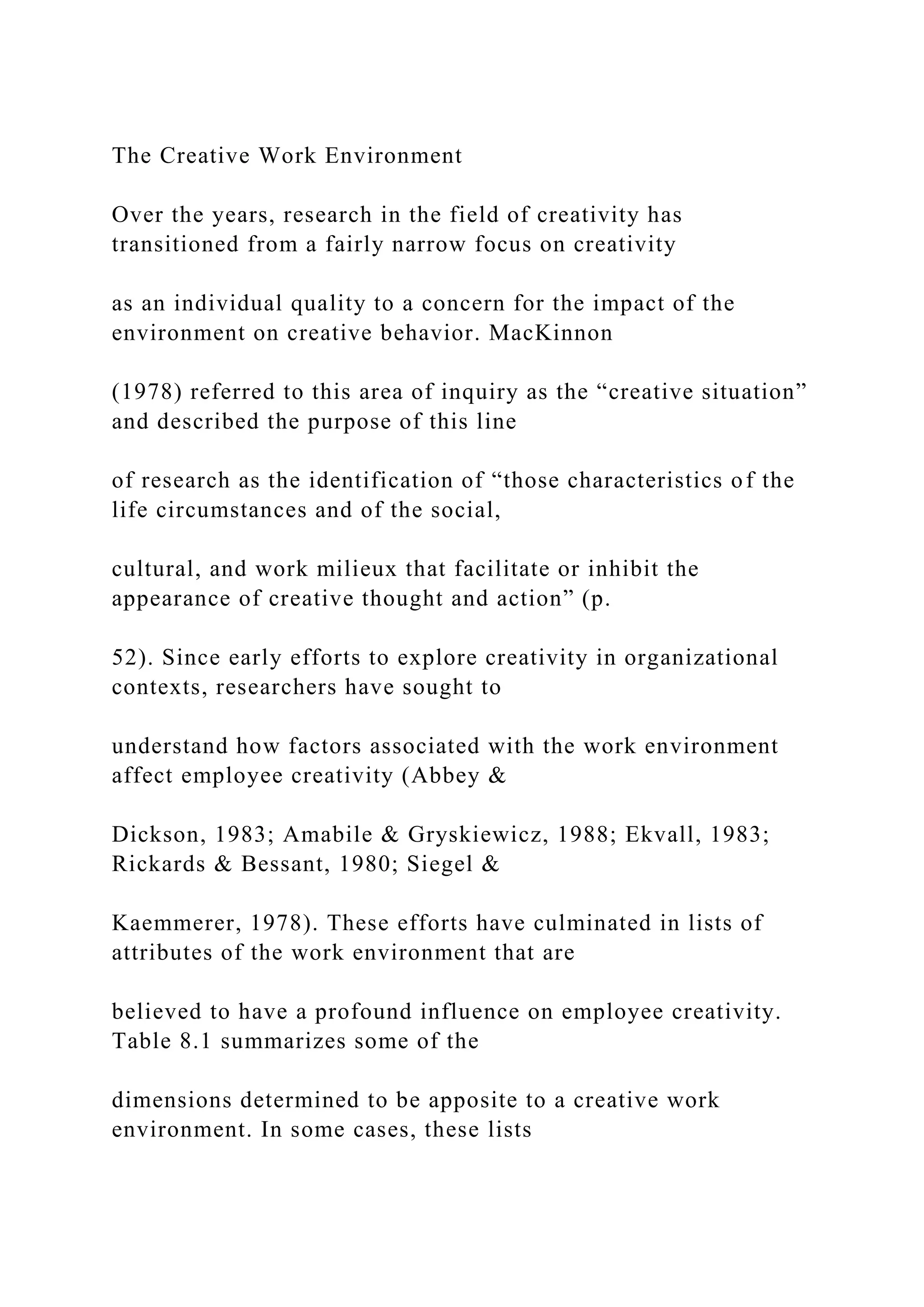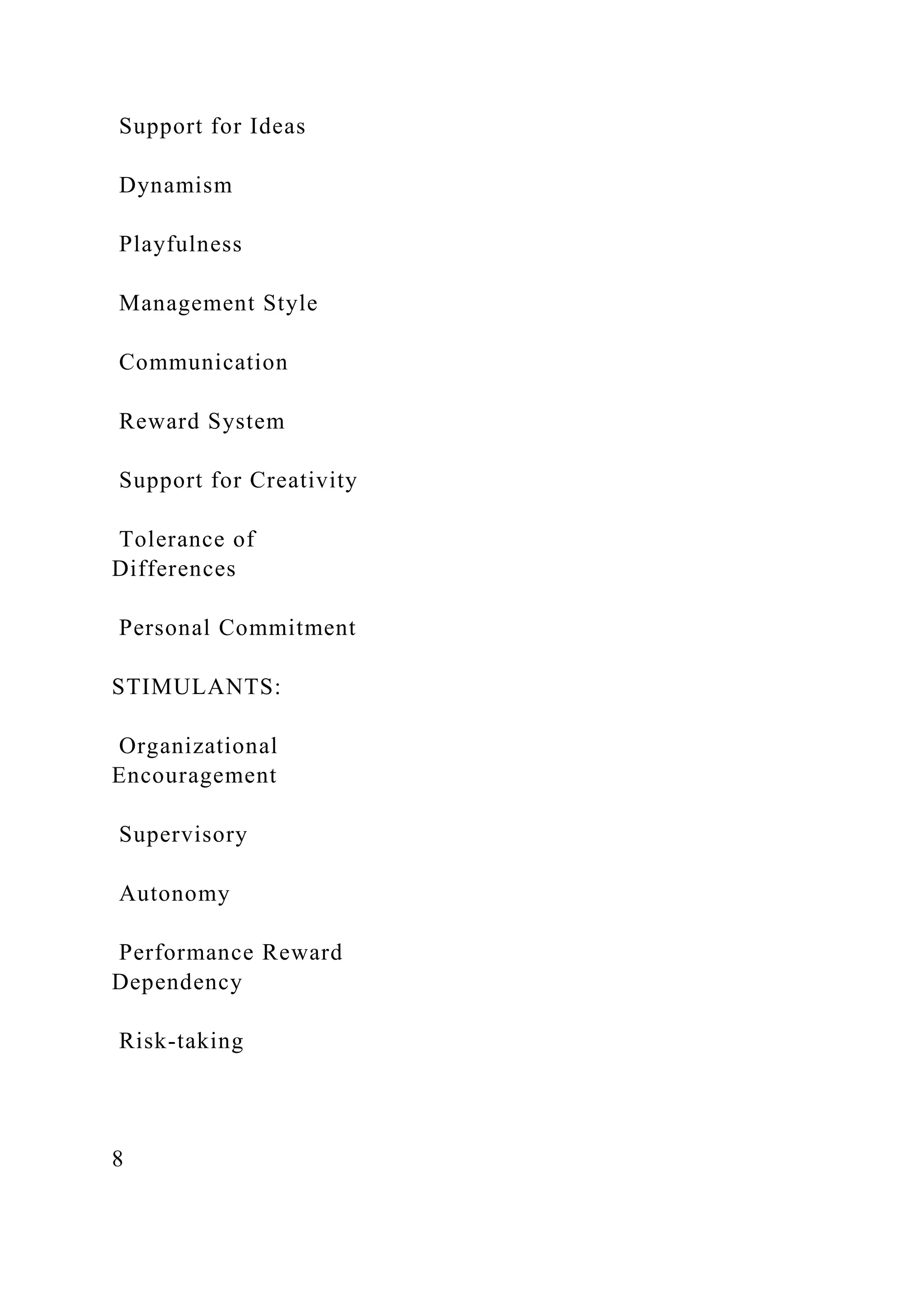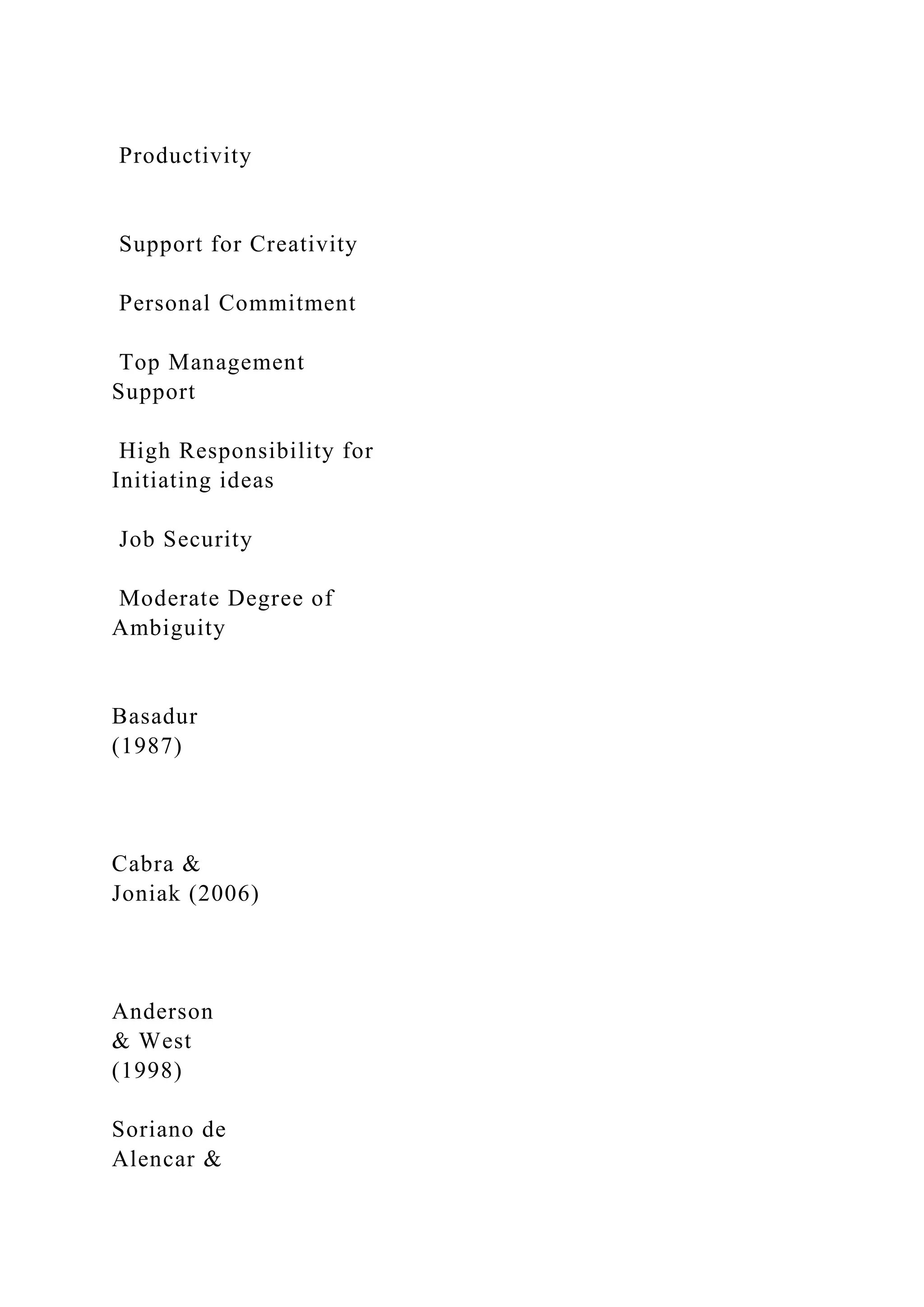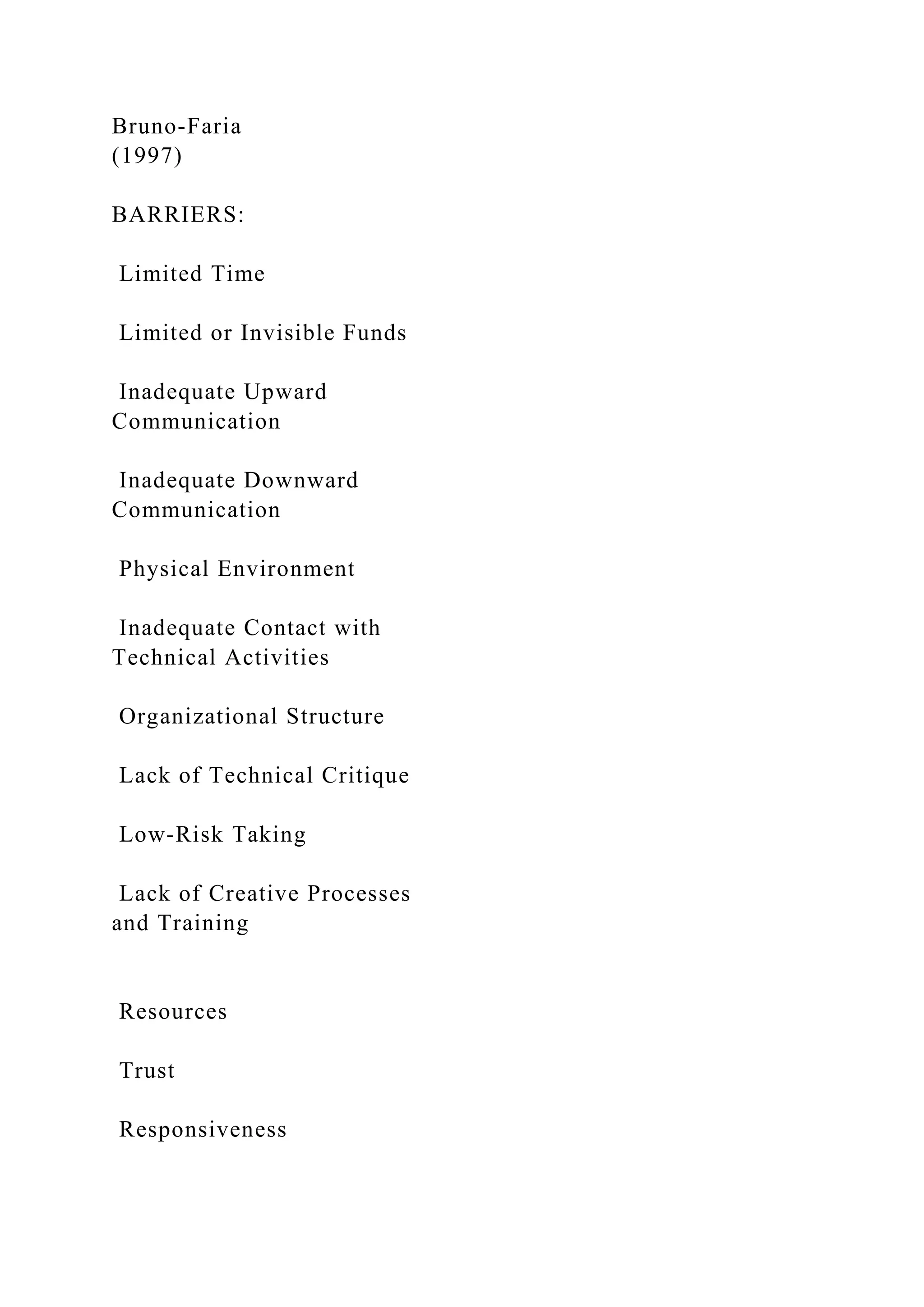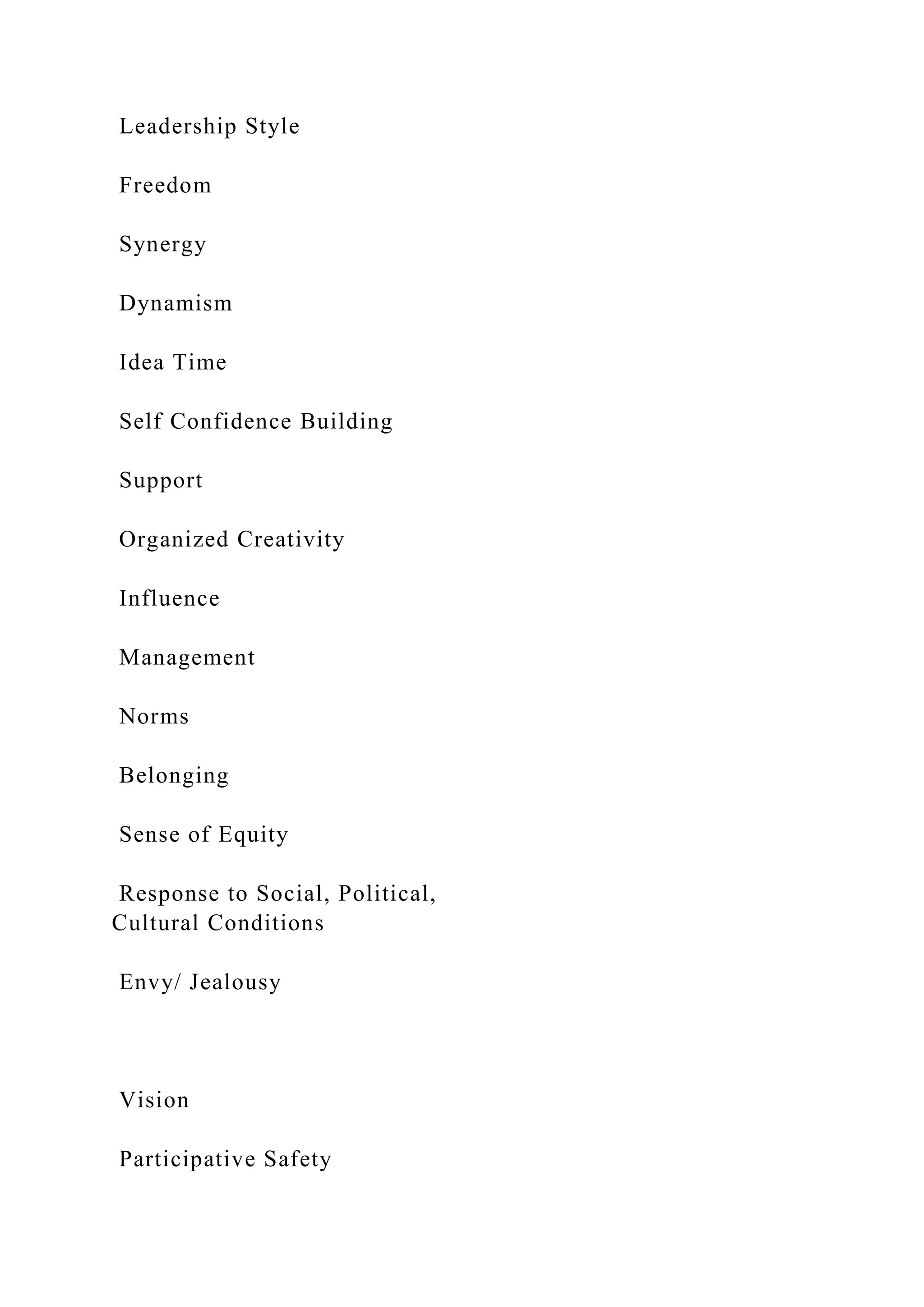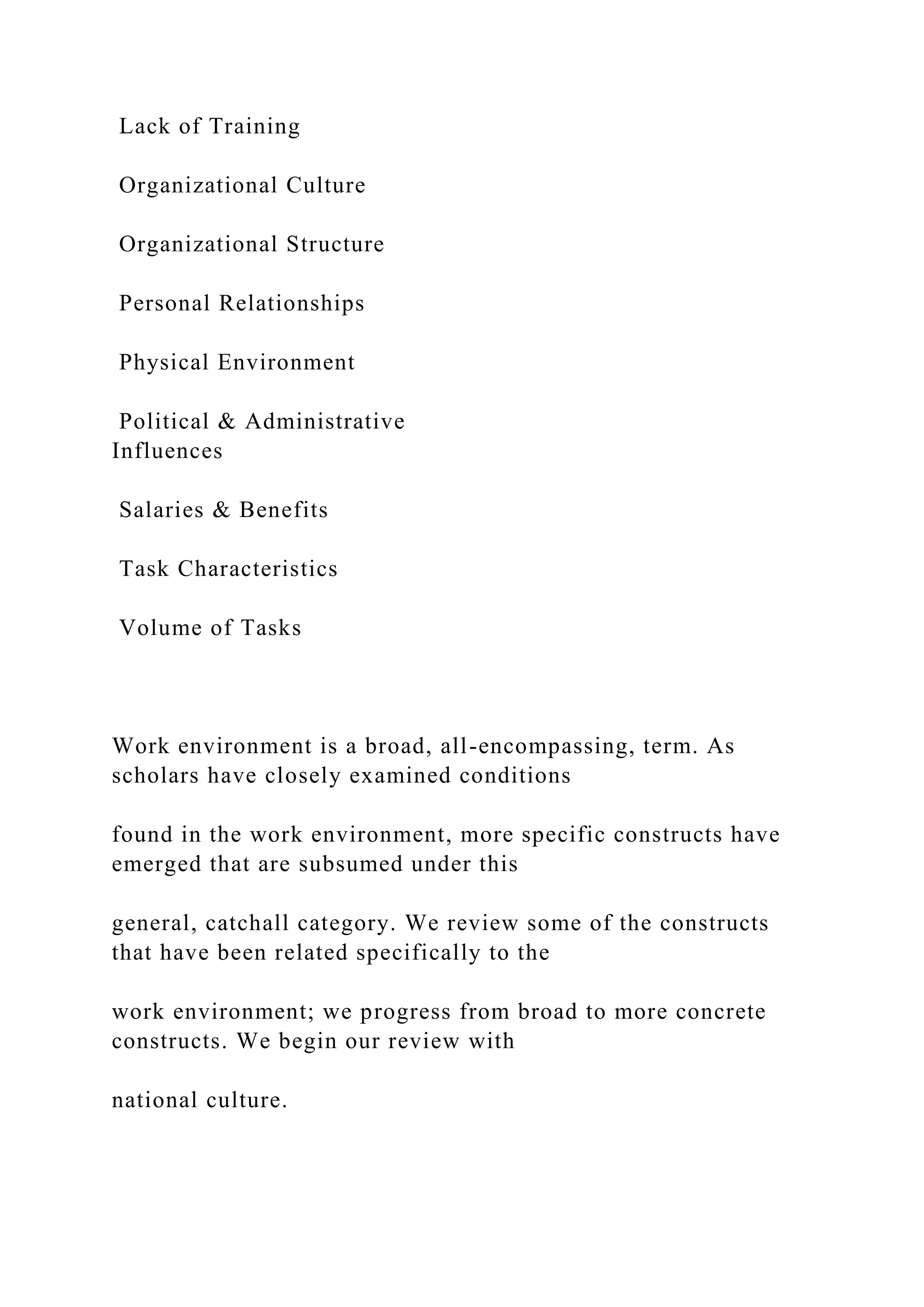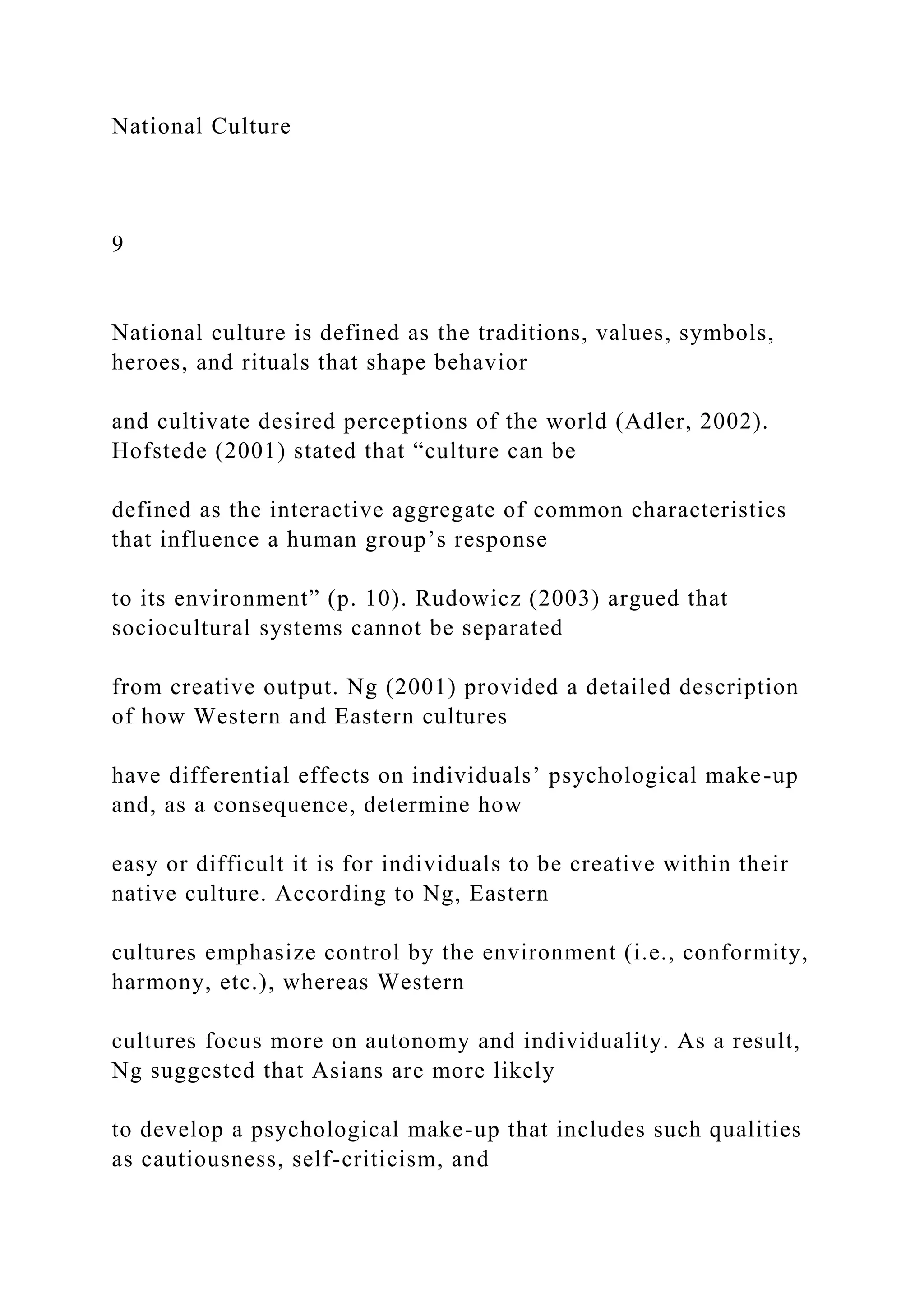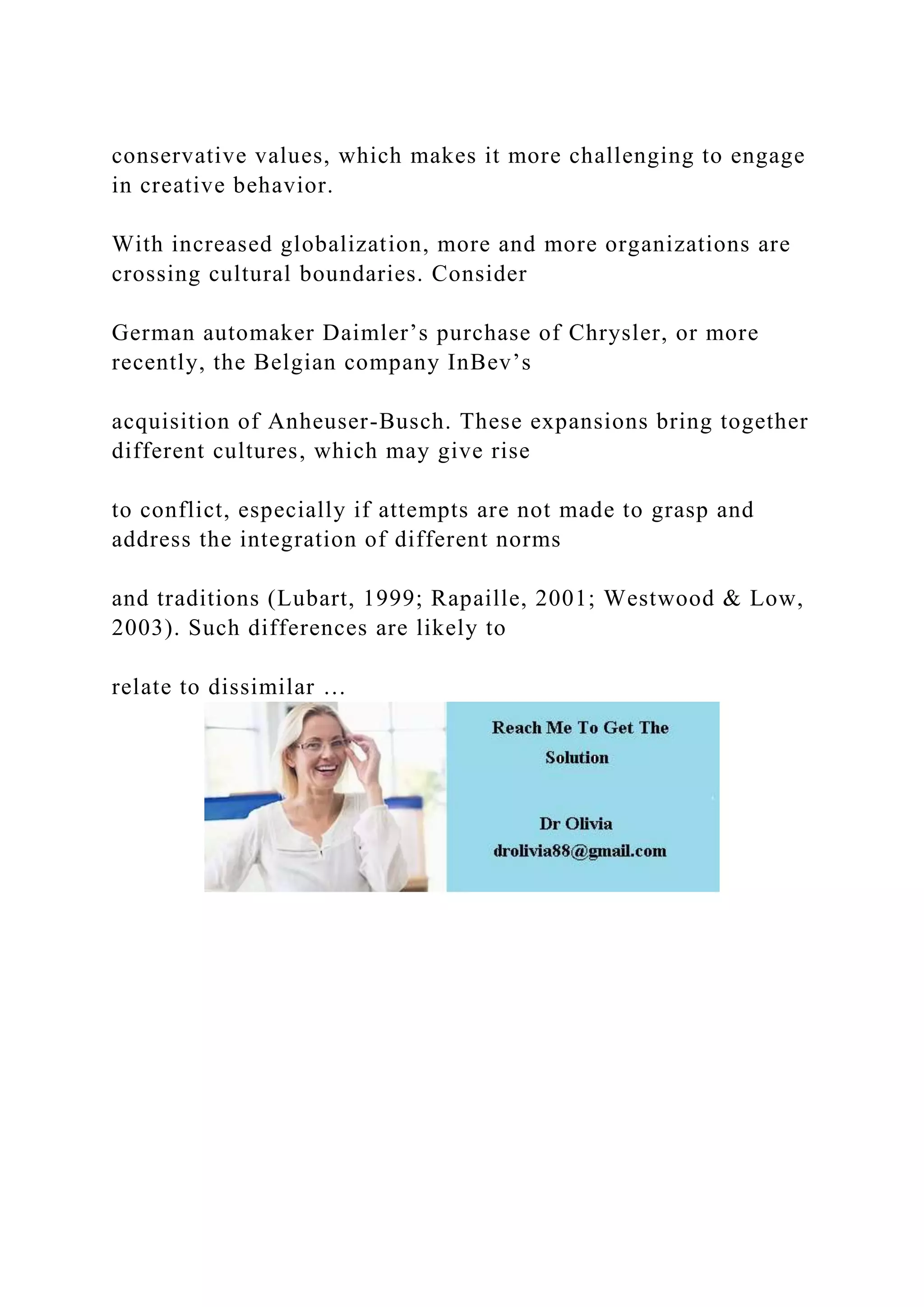The document discusses the complex moral issues surrounding abortion and encourages understanding both sides without bias. It also emphasizes the importance of creativity, foresight, and innovation in organizations, suggesting that these concepts are interconnected and essential for adapting to rapid societal changes. Additionally, it highlights the significance of analyzing these elements through specific case studies and theoretical frameworks in order to foster ethical organizational practices.
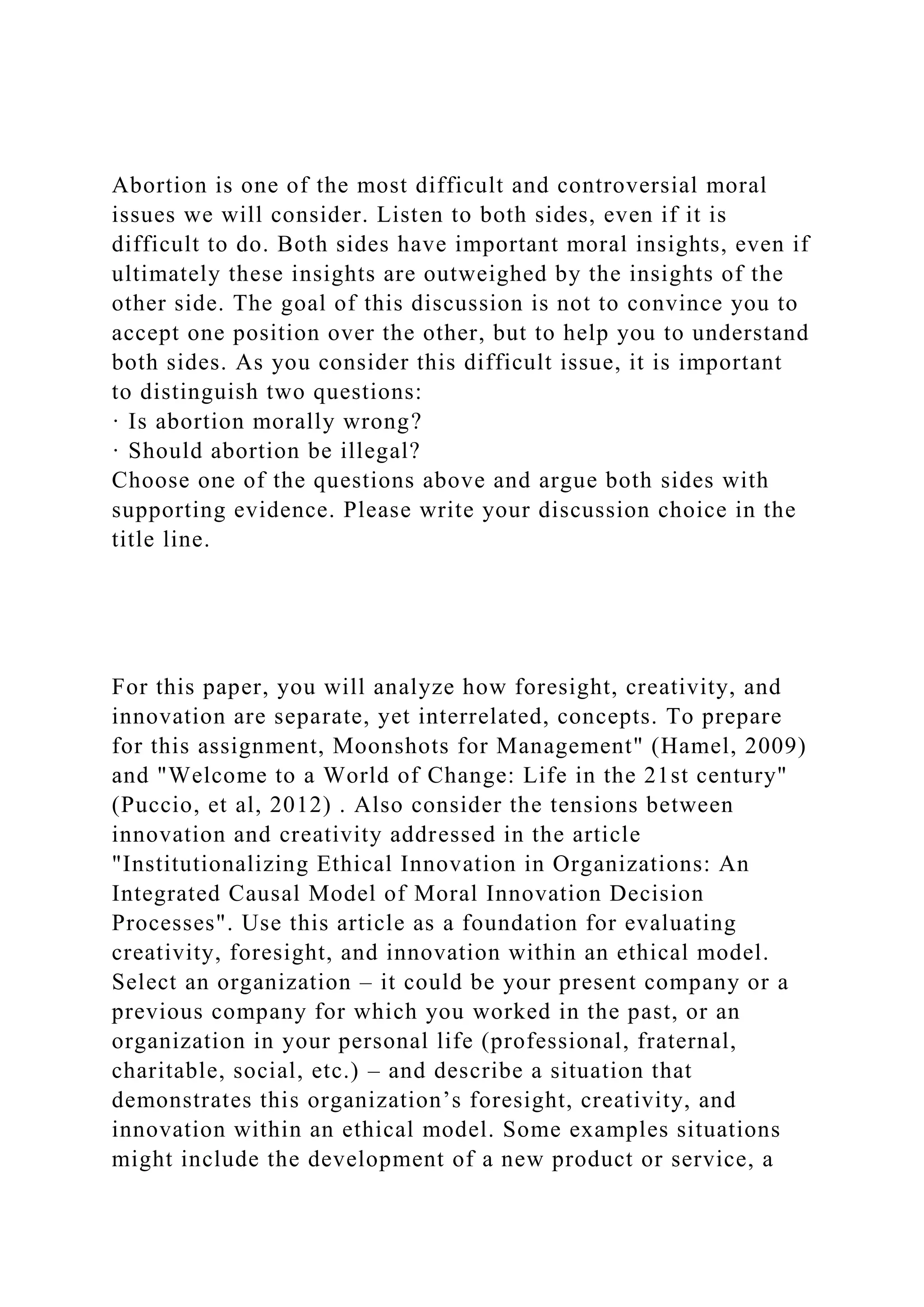
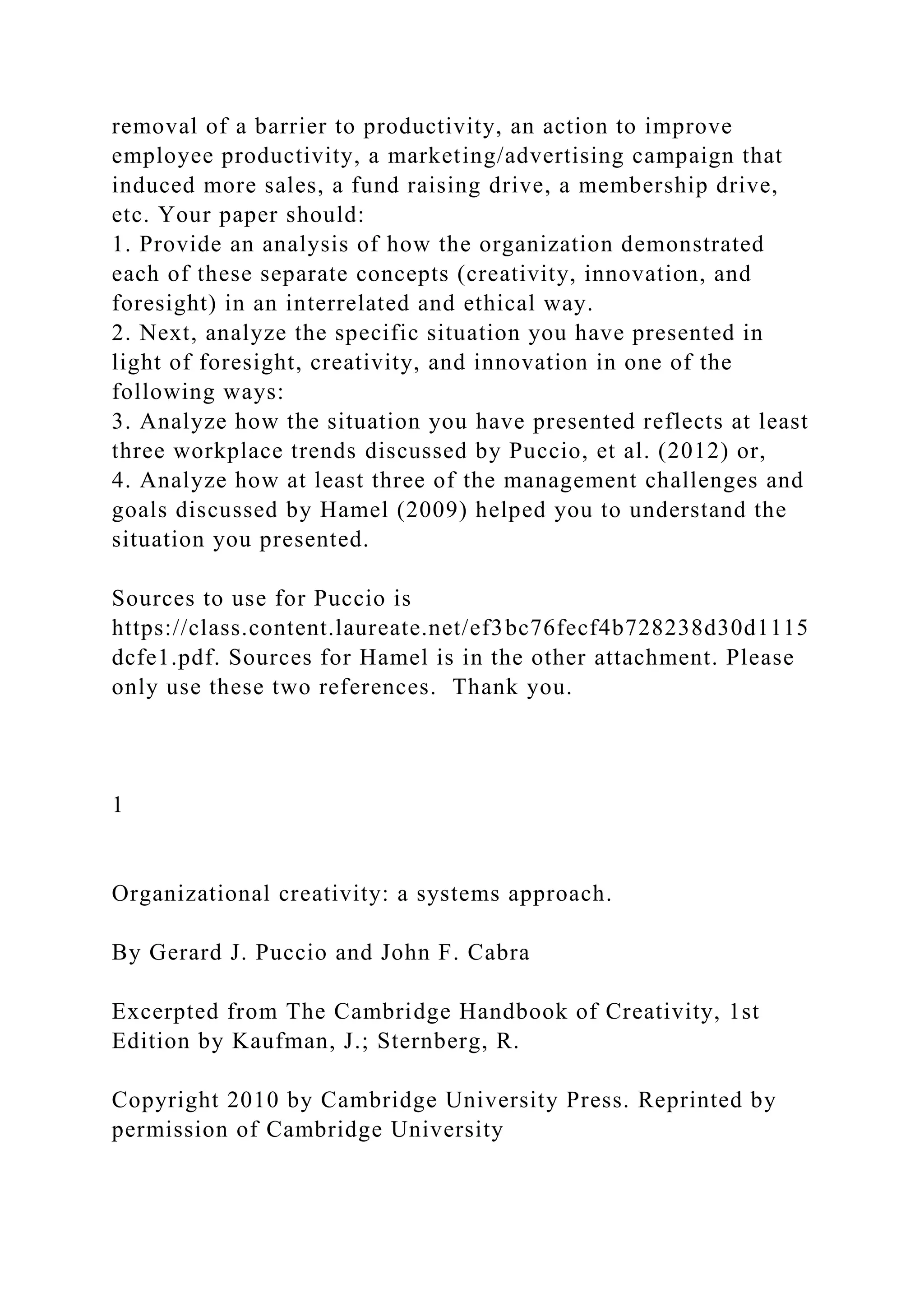

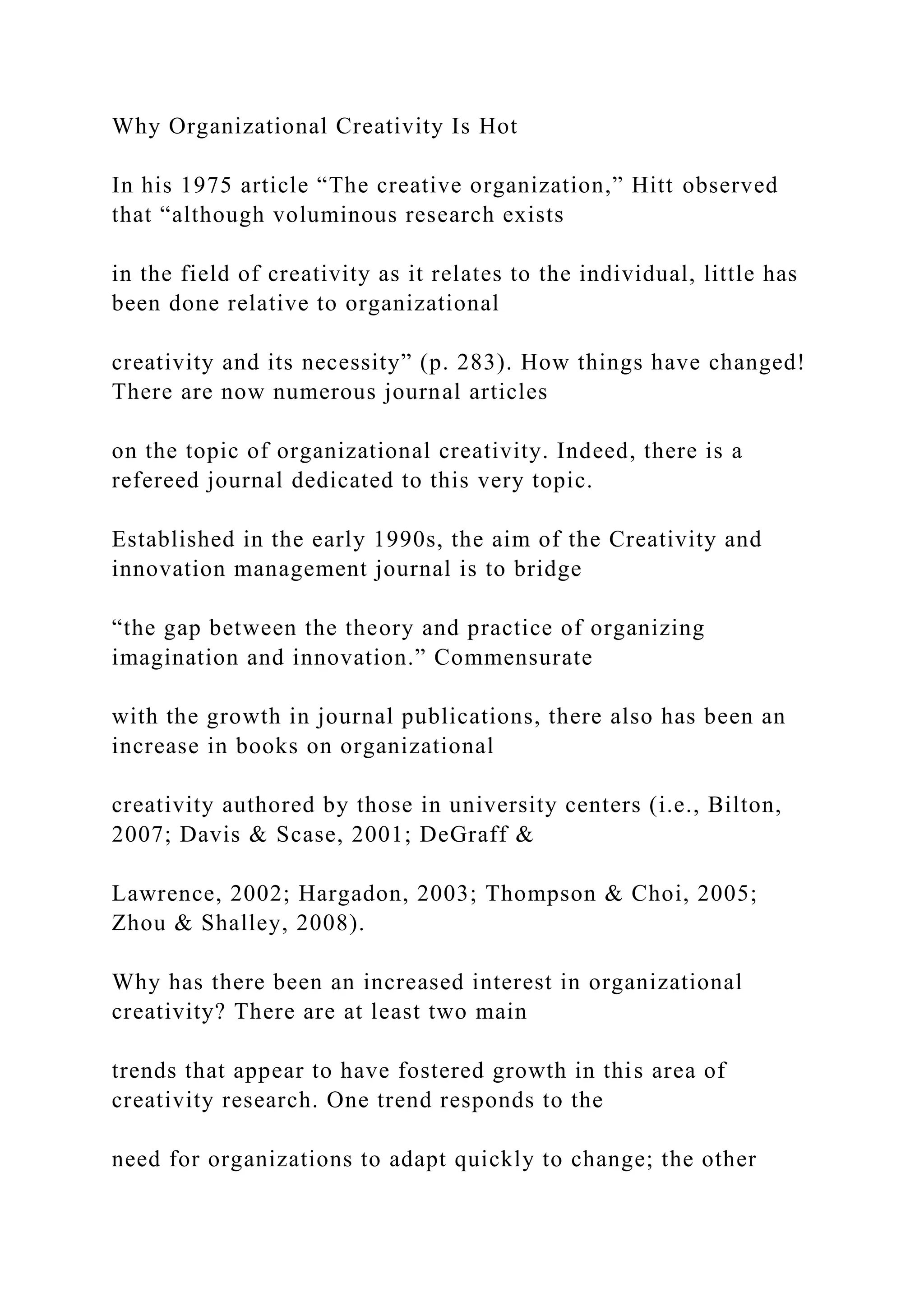
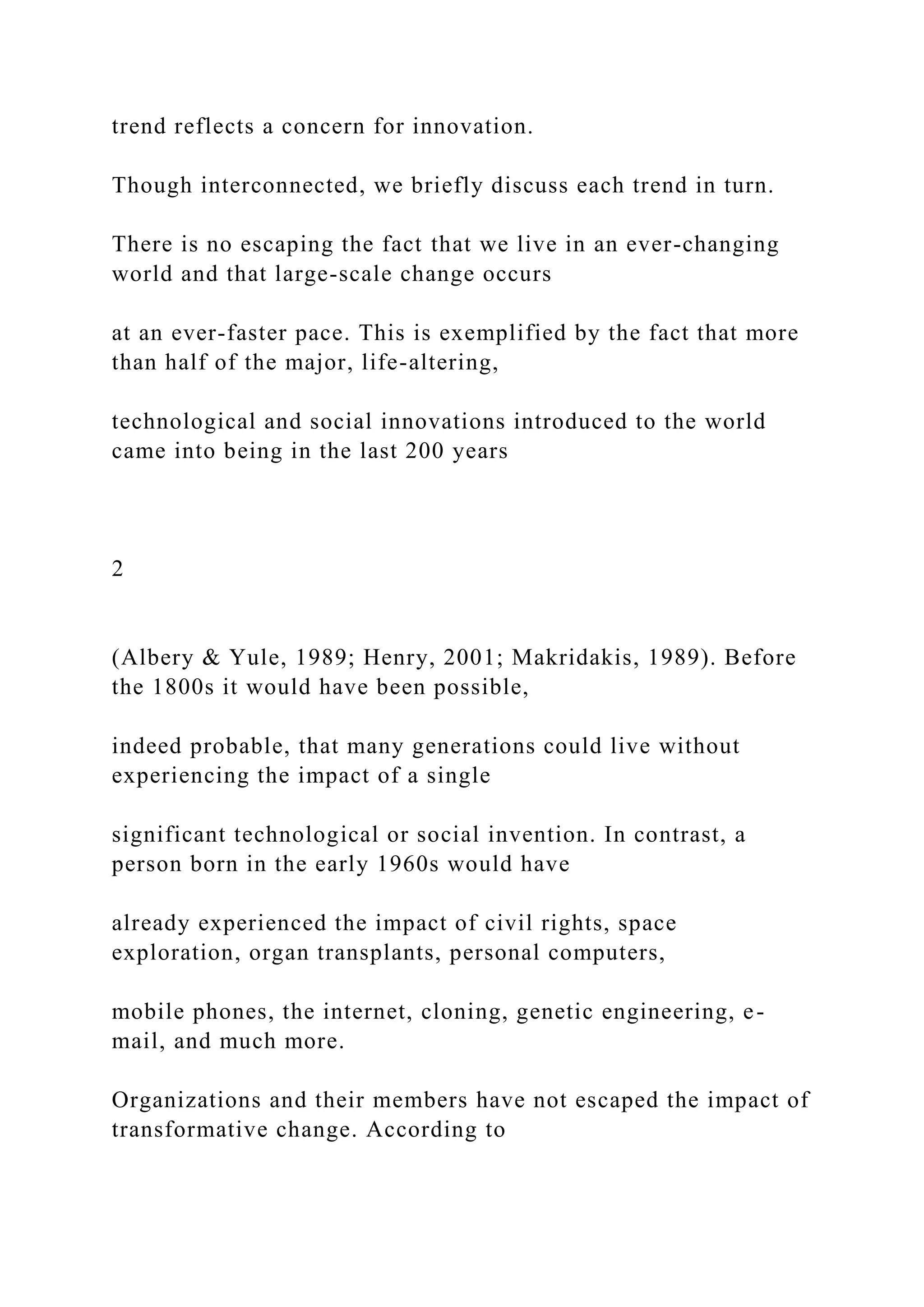
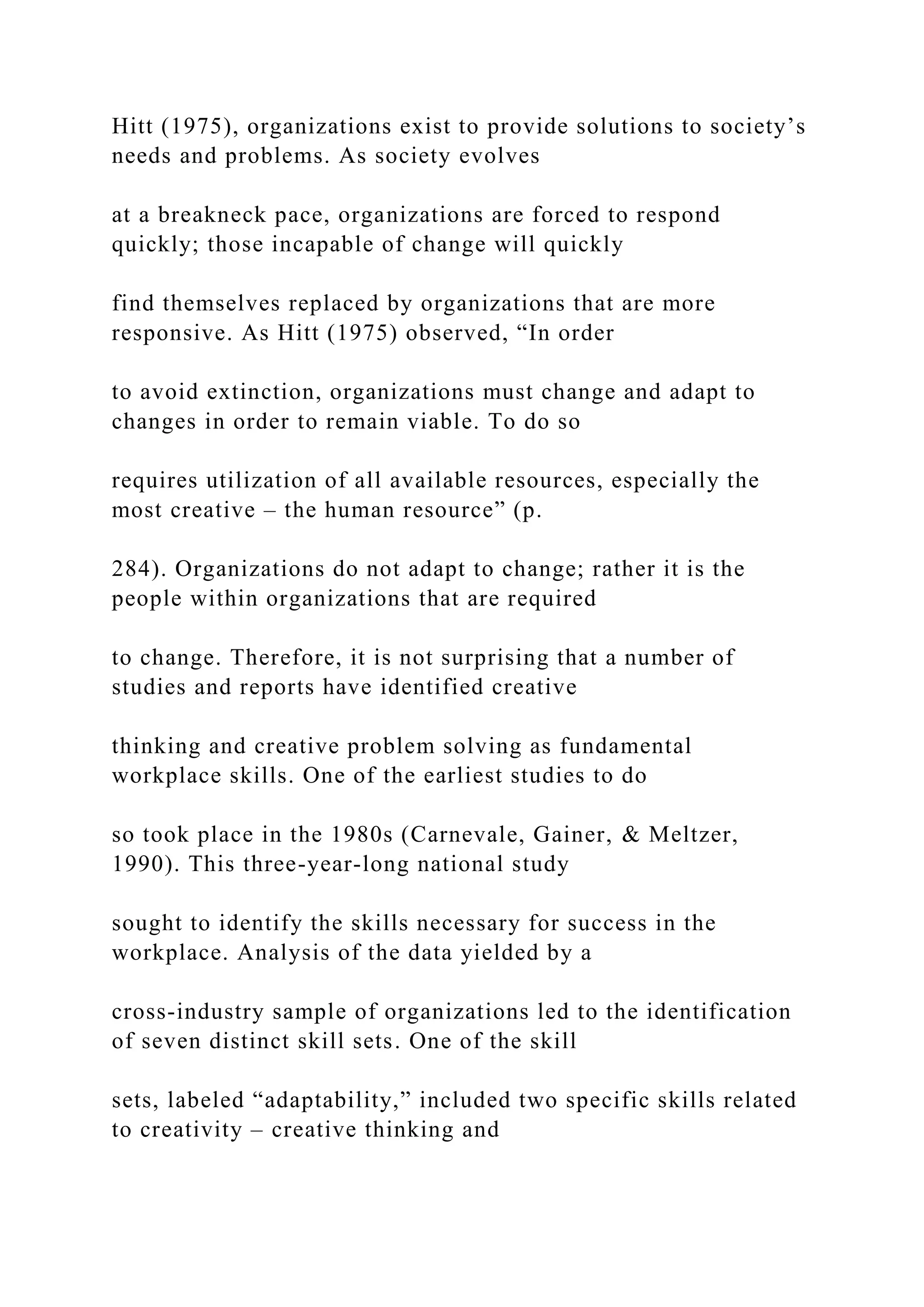
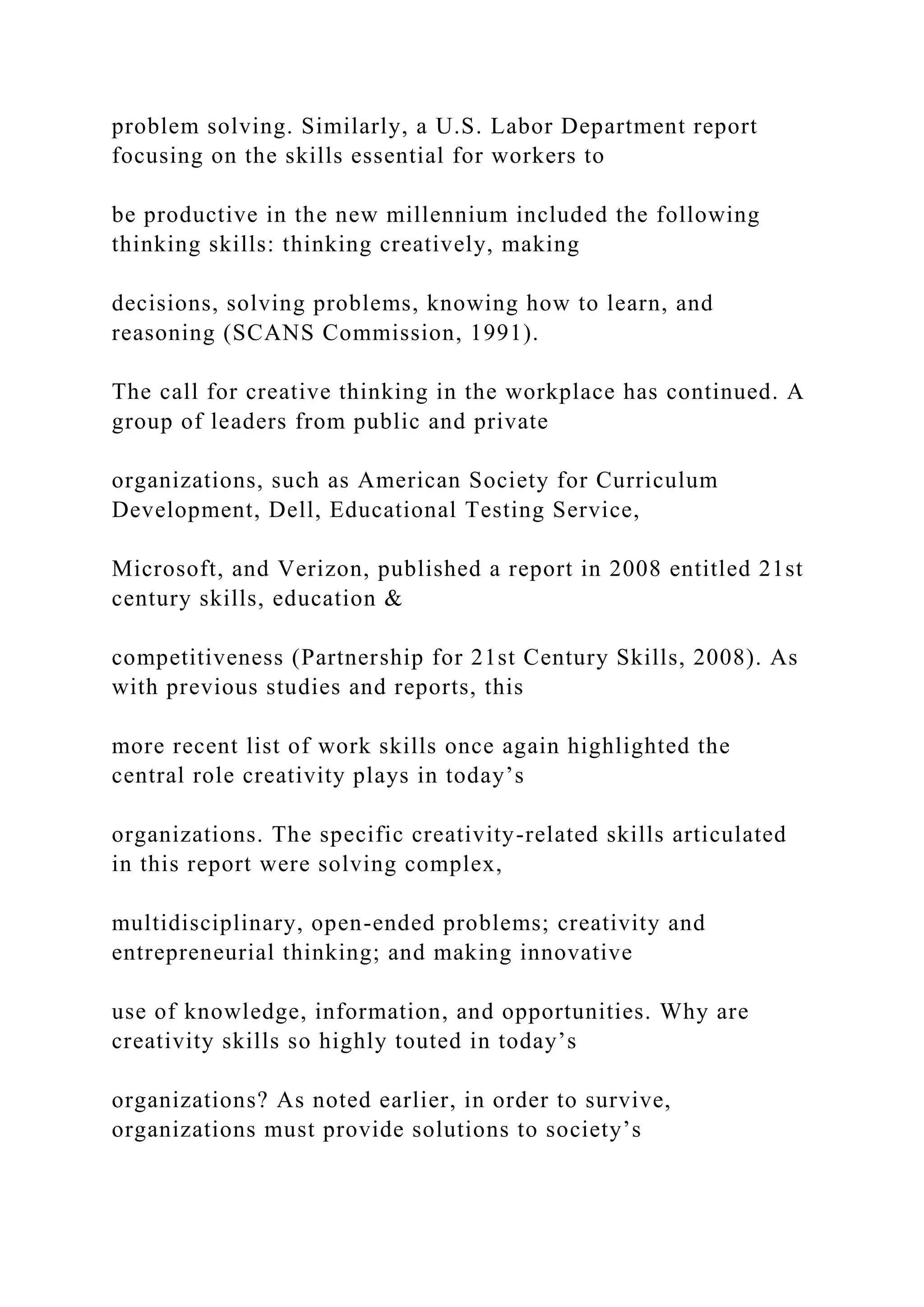
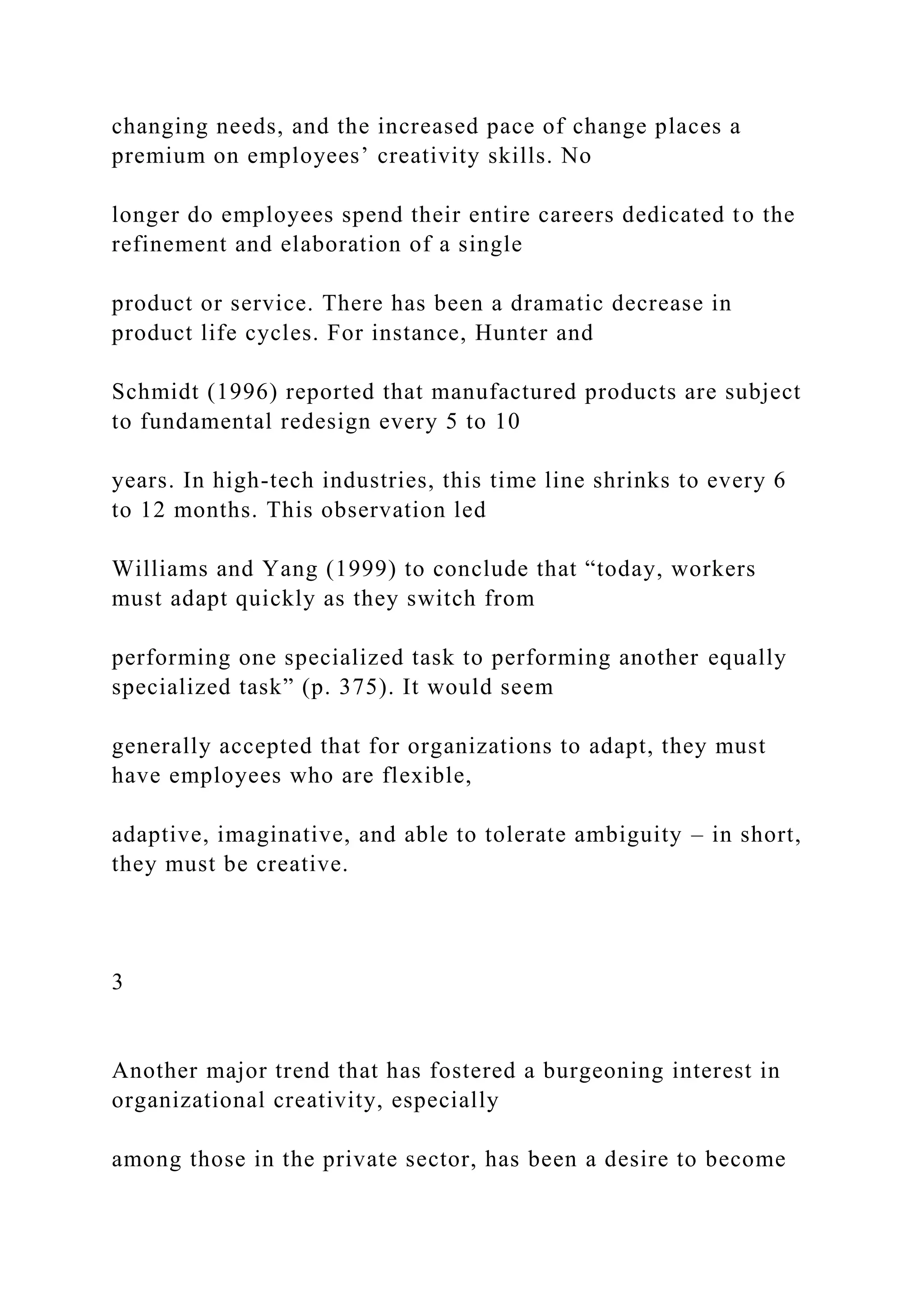
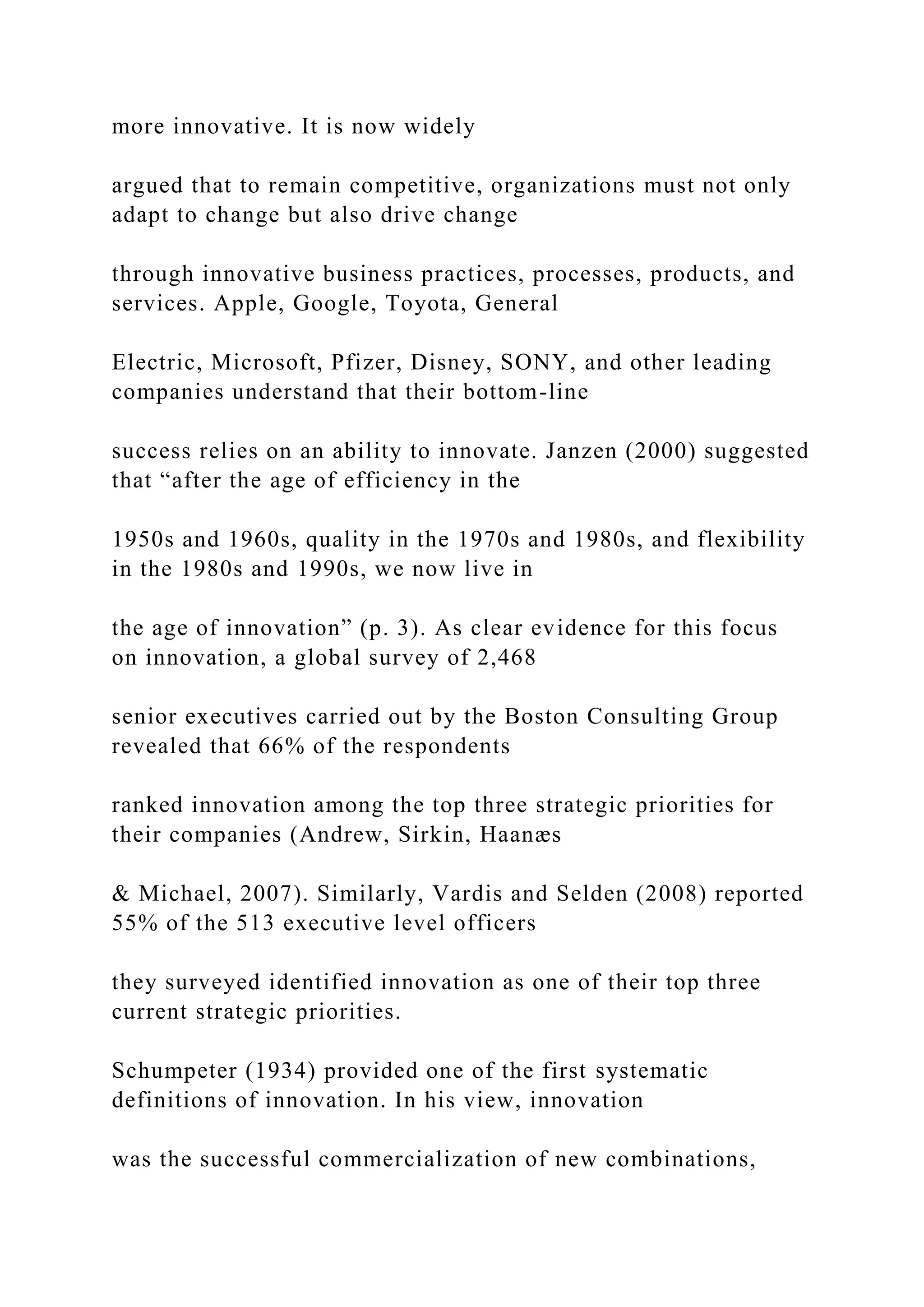
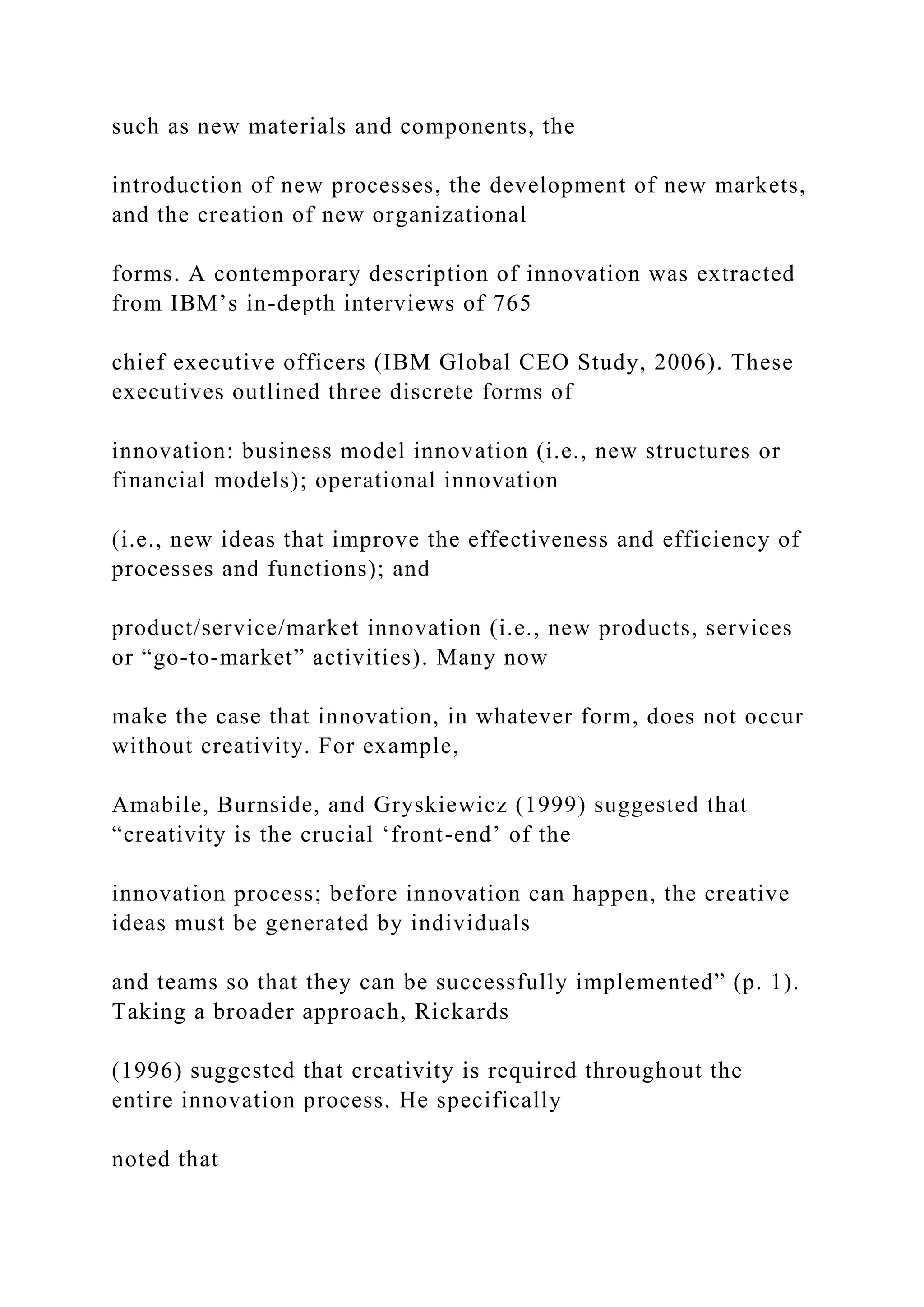
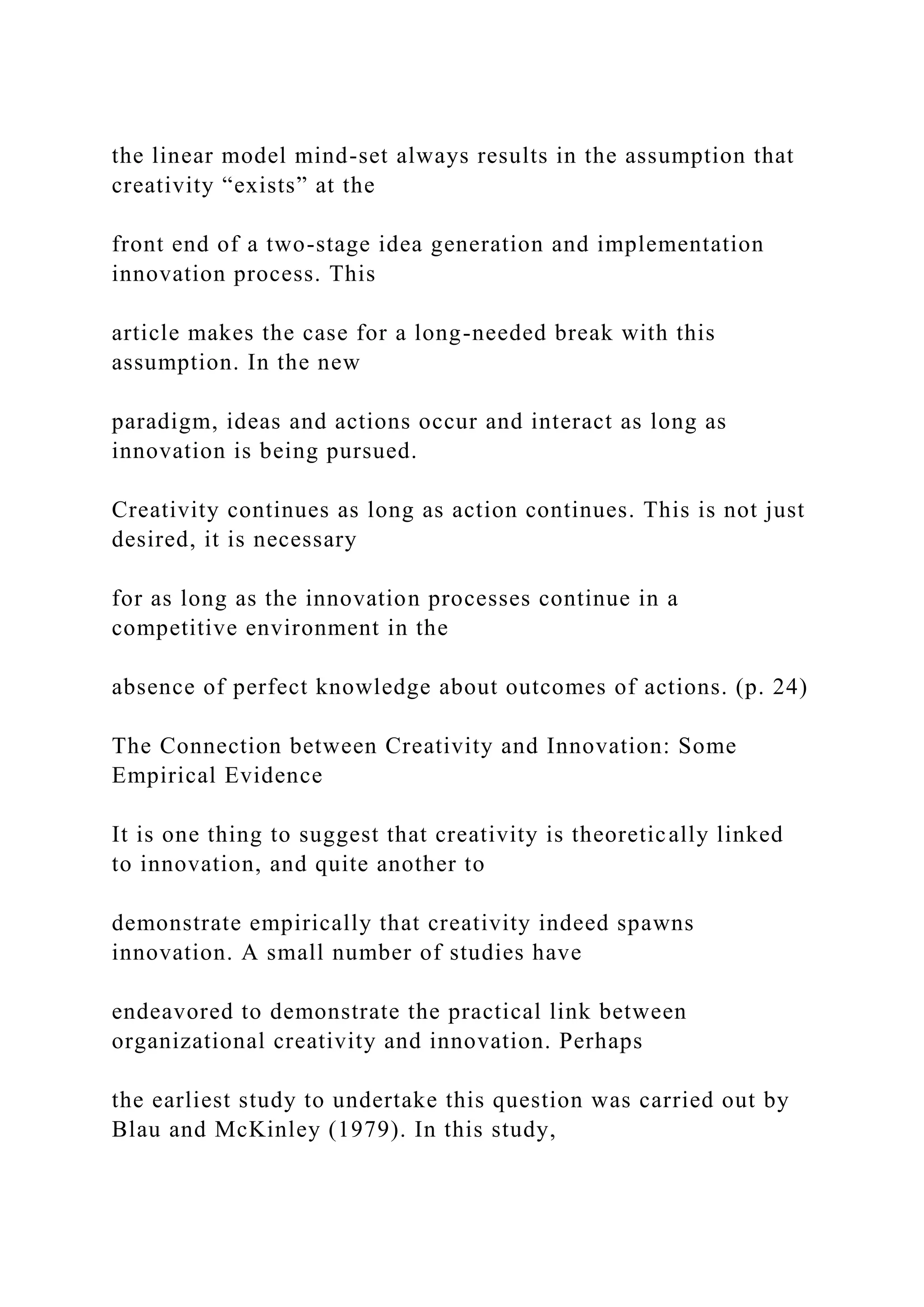
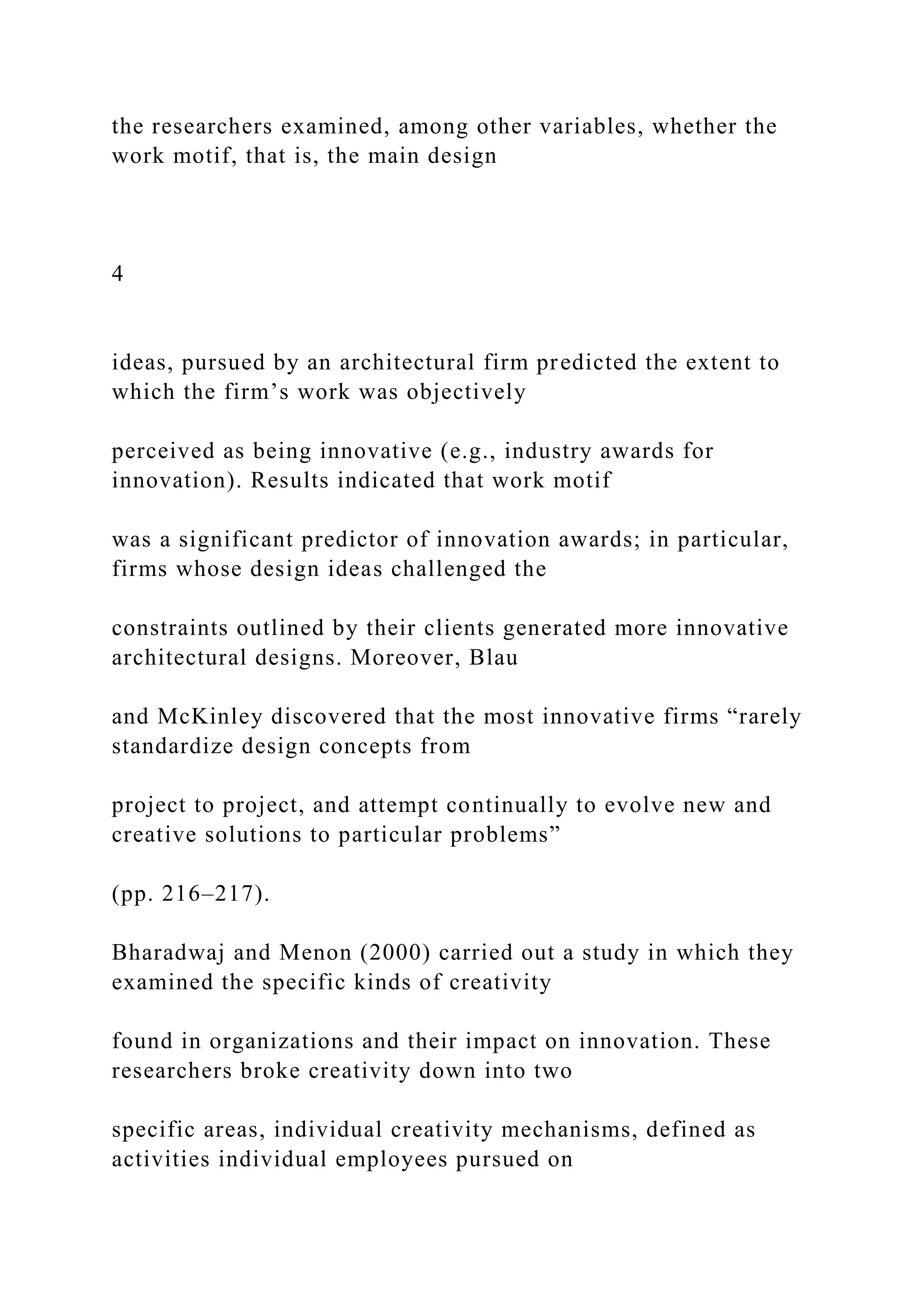

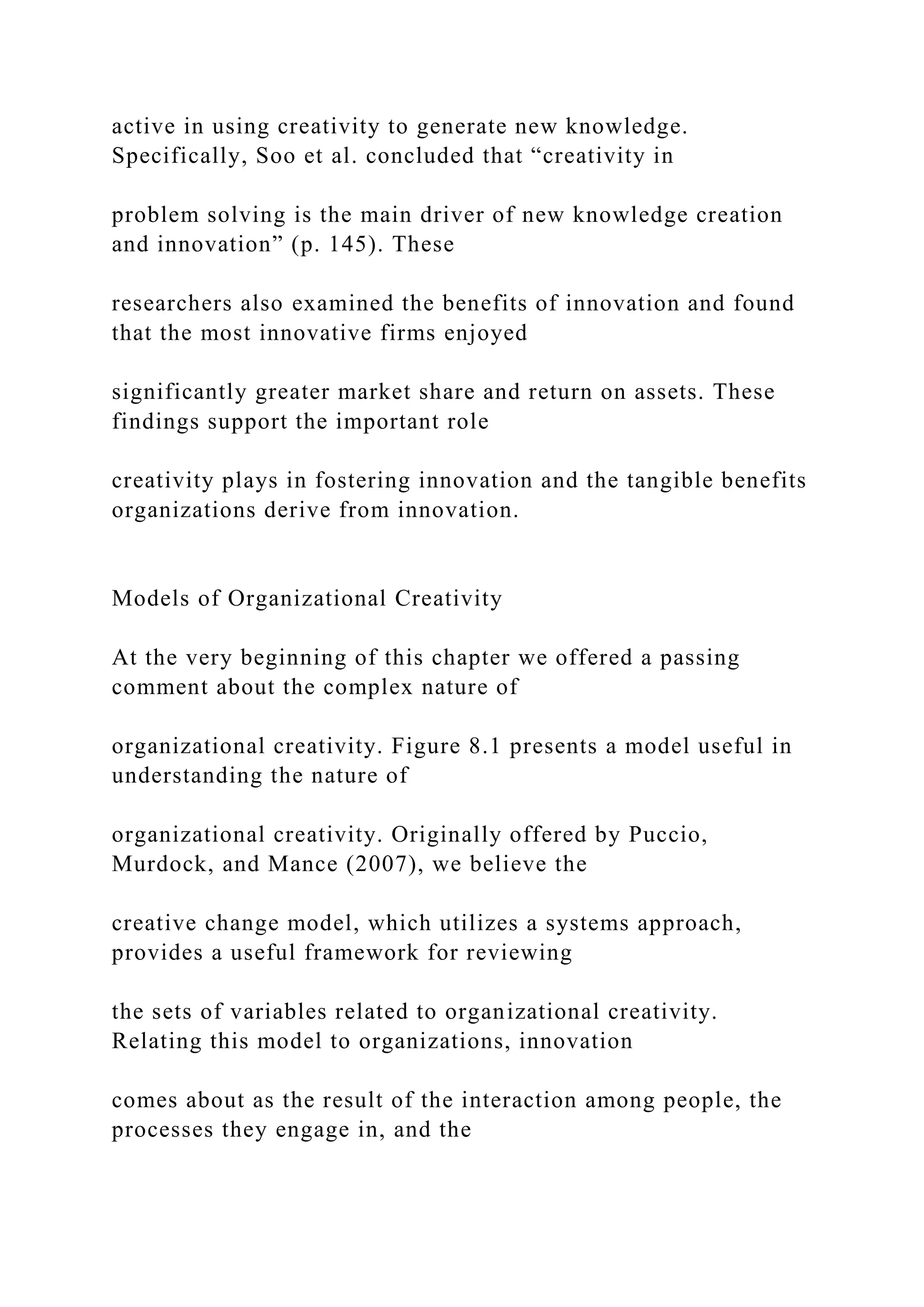
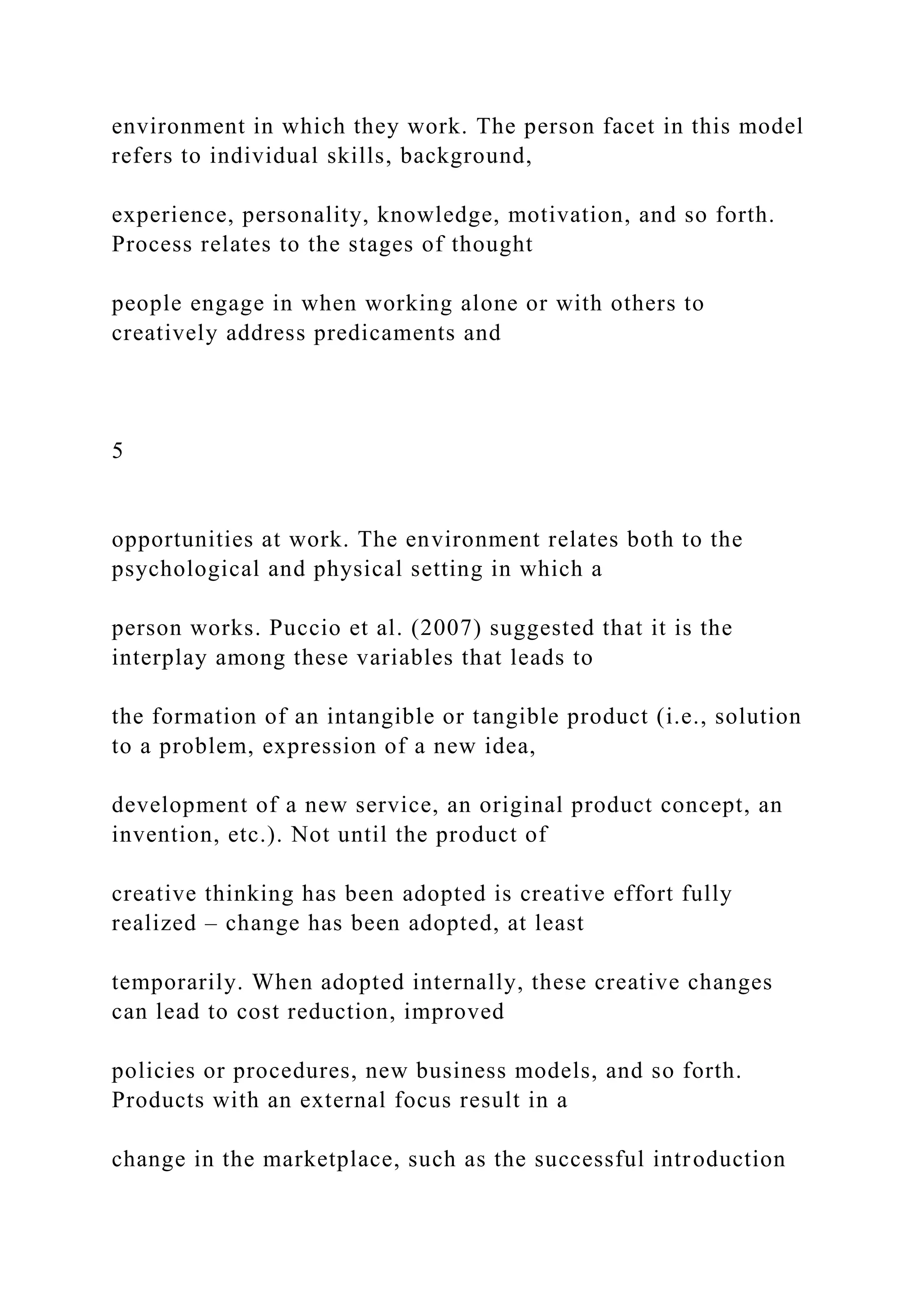

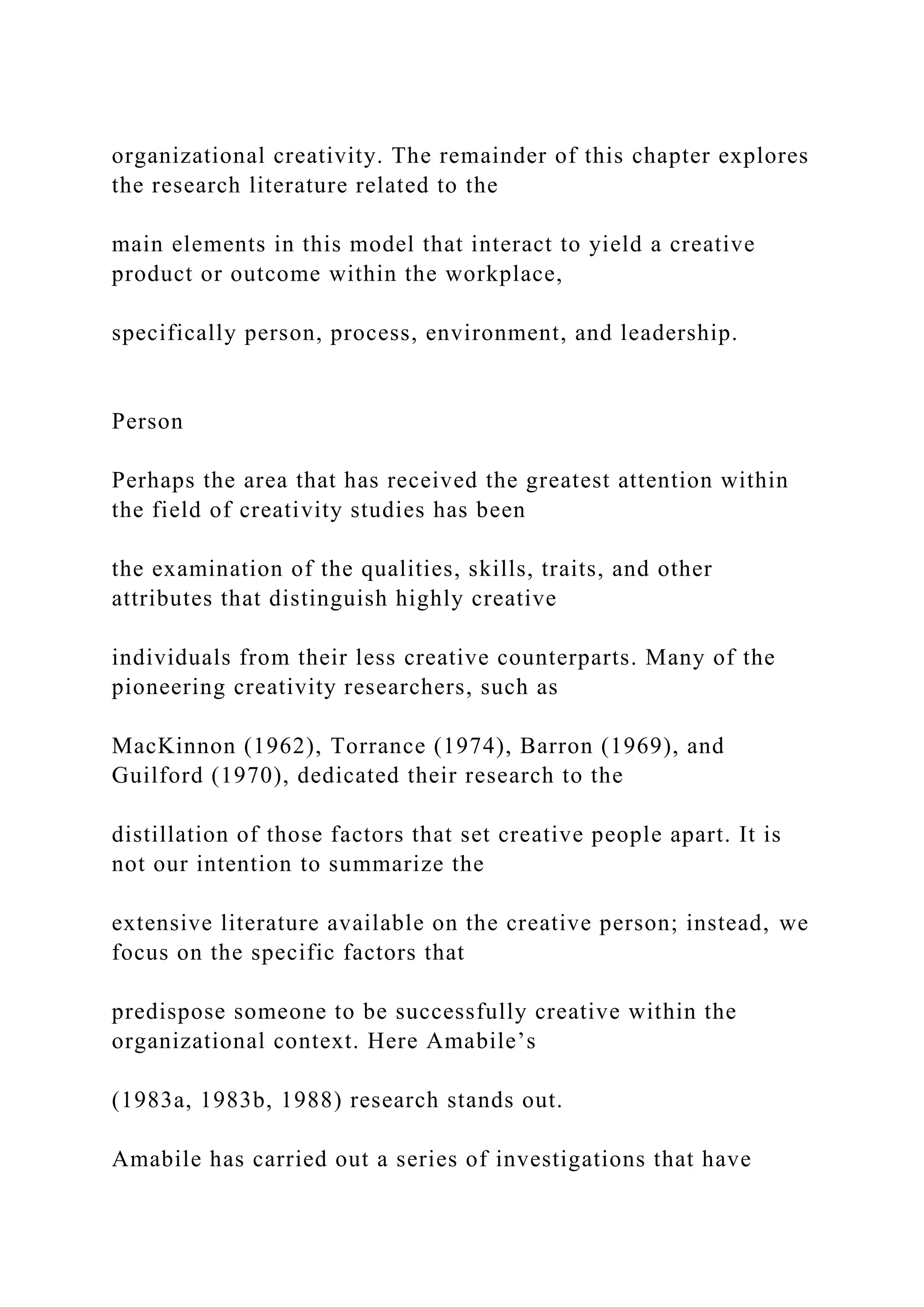
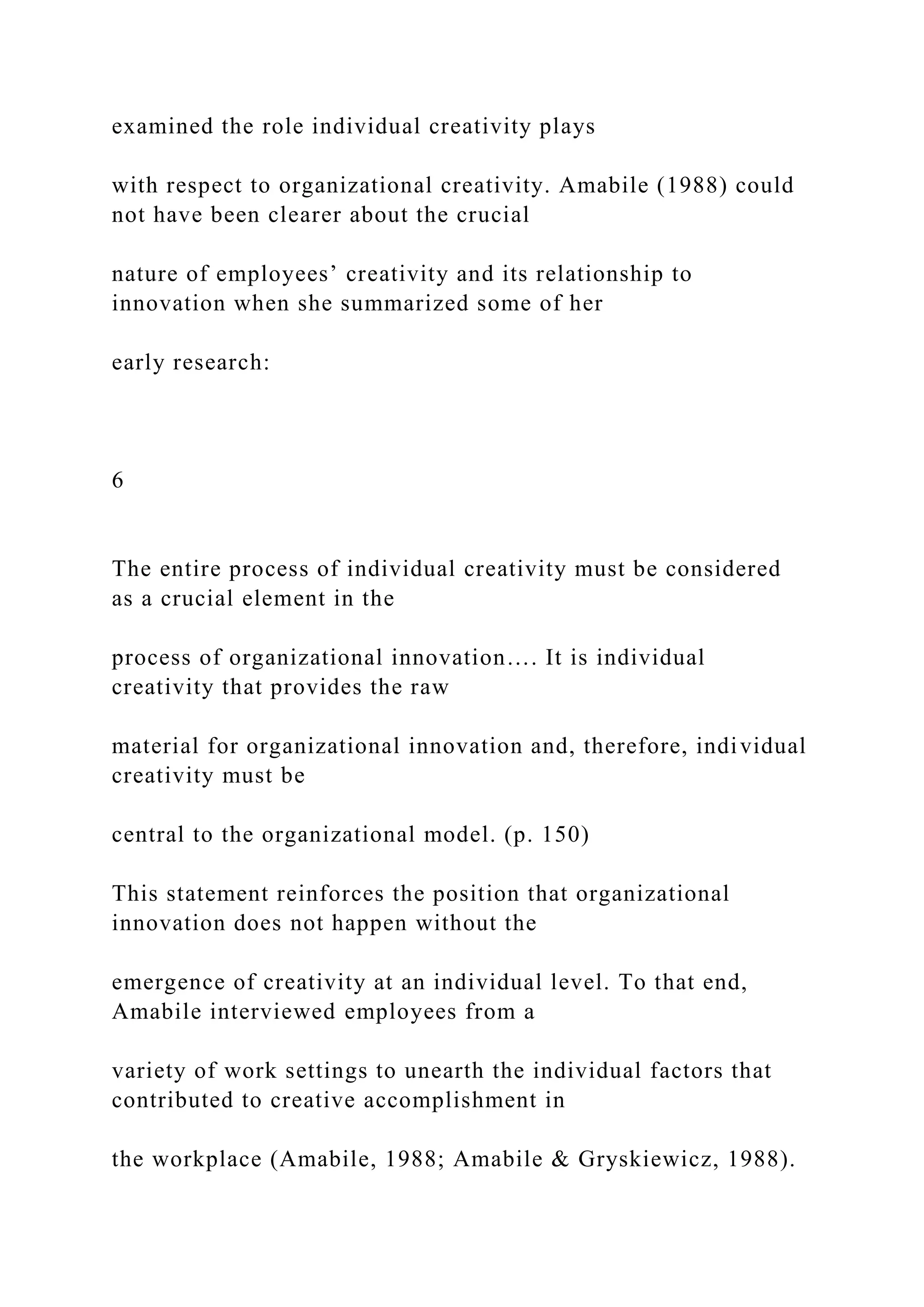

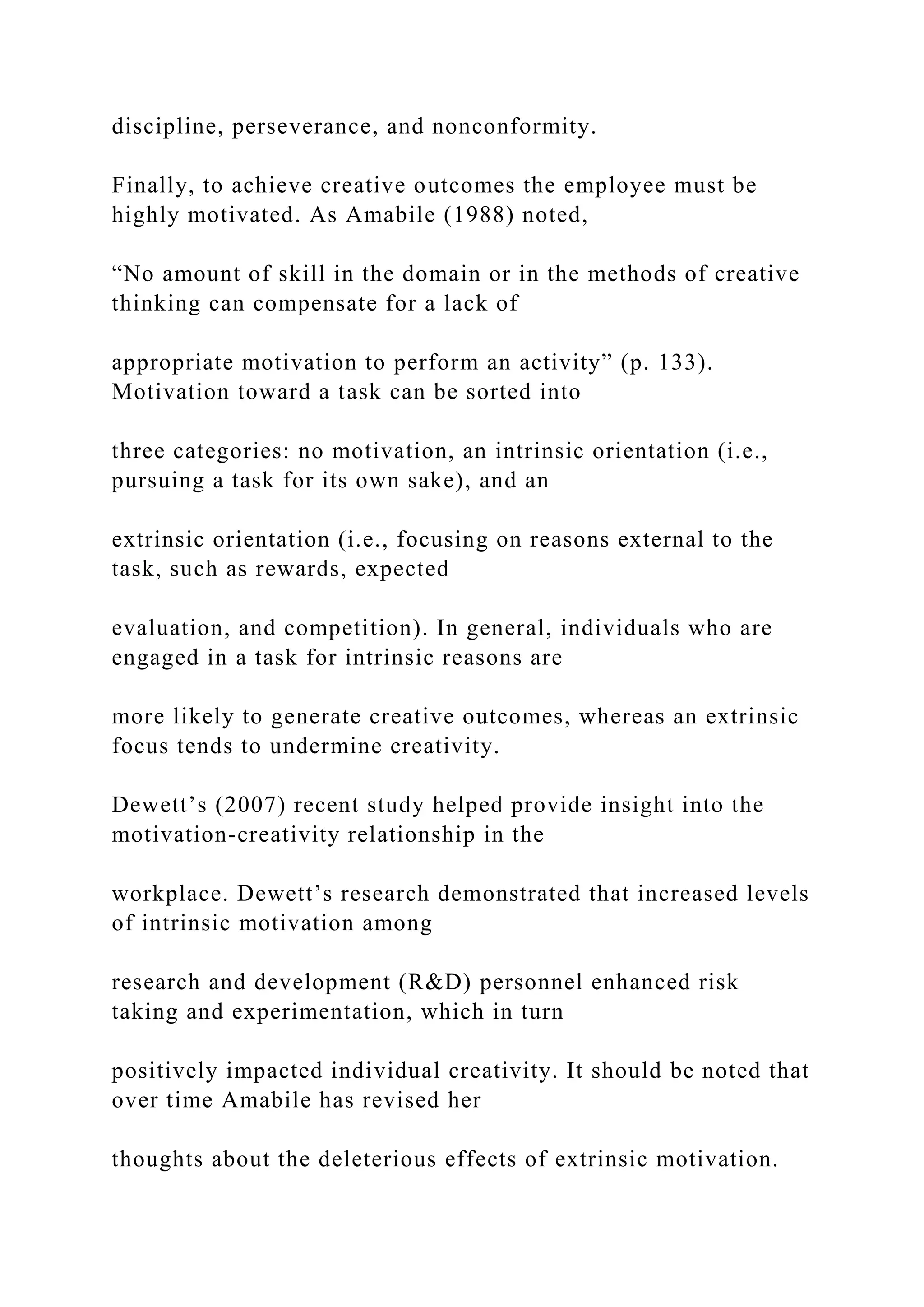
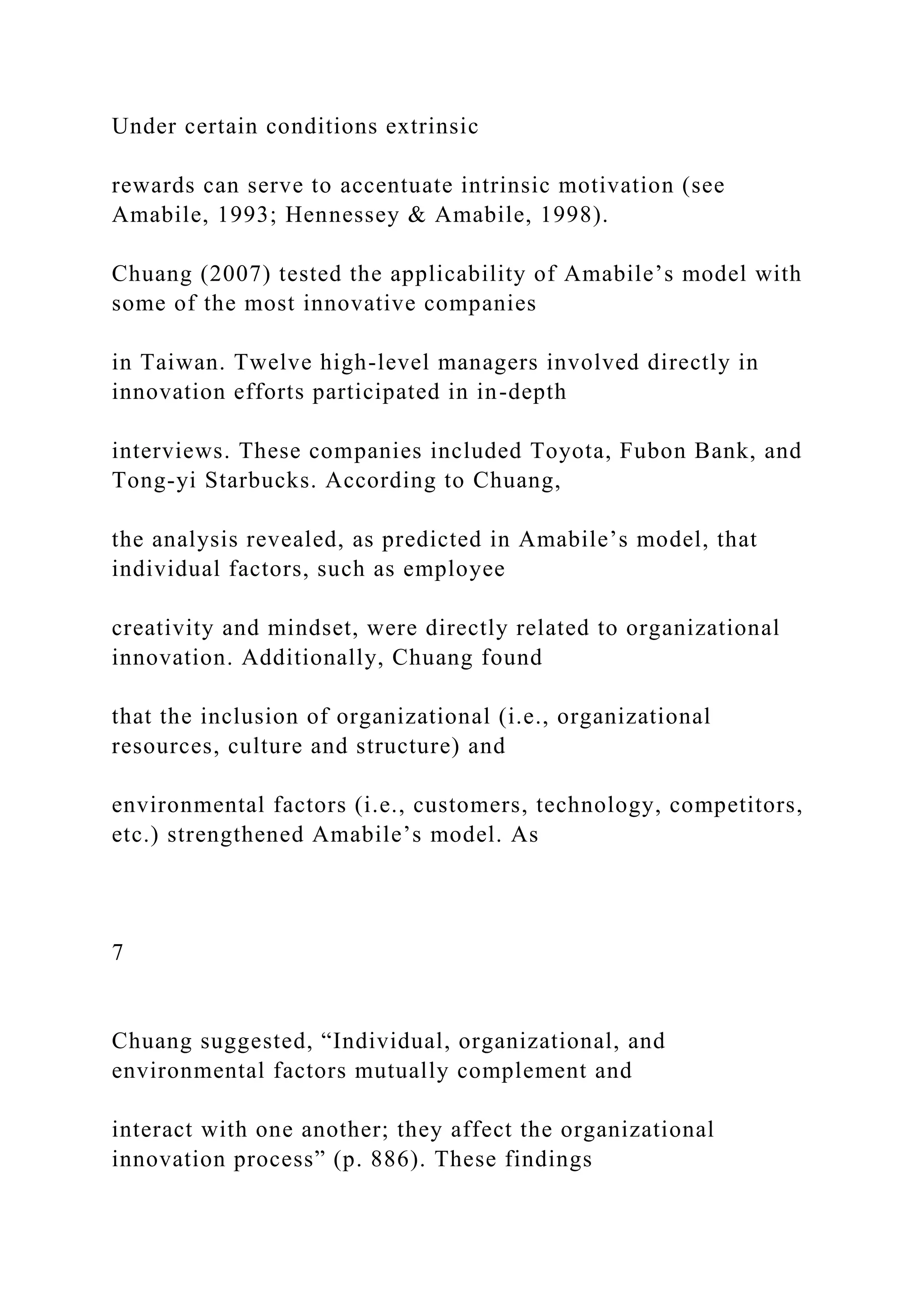
![support the contention, as outlined in this chapter, that models
of organizational creativity must take a
systems approach and should consider the interaction among the
fundamental facets of individuals, the
surrounding environment, and the stages of the creative process.
Ford (1995) put forward a similar
argument, stating that he believes “this love affair with creators
has led researcher [sic] to focus too
narrowly on characteristics of individuals that lead them to
commit creative acts” (p. 21). Based on this
assertion, Ford proposed that the creative act could be likened
to a crime. That is, creativity involves
motive, means, and opportunity. To underscore the importance
of the latter variable, Ford noted that a
positive work environment can even serve to draw out creativity
among those who would not ordinarily
pursue creative acts. Amabile’s own research acknowledges the
crucial influence the work environment
has on employee creativity (Amabile et al., 1999; Amabile &
Gryskiewicz, 1988). The next section
reviews some of the literature that has delineated the aspects of
environment that are conductive to
creativity in the workplace.](https://image.slidesharecdn.com/abortionisoneofthemostdifficultandcontroversialmoralissu-221202020041-ad3425ae/75/Abortion-is-one-of-the-most-difficult-and-controversial-moral-issu-docx-22-2048.jpg)
